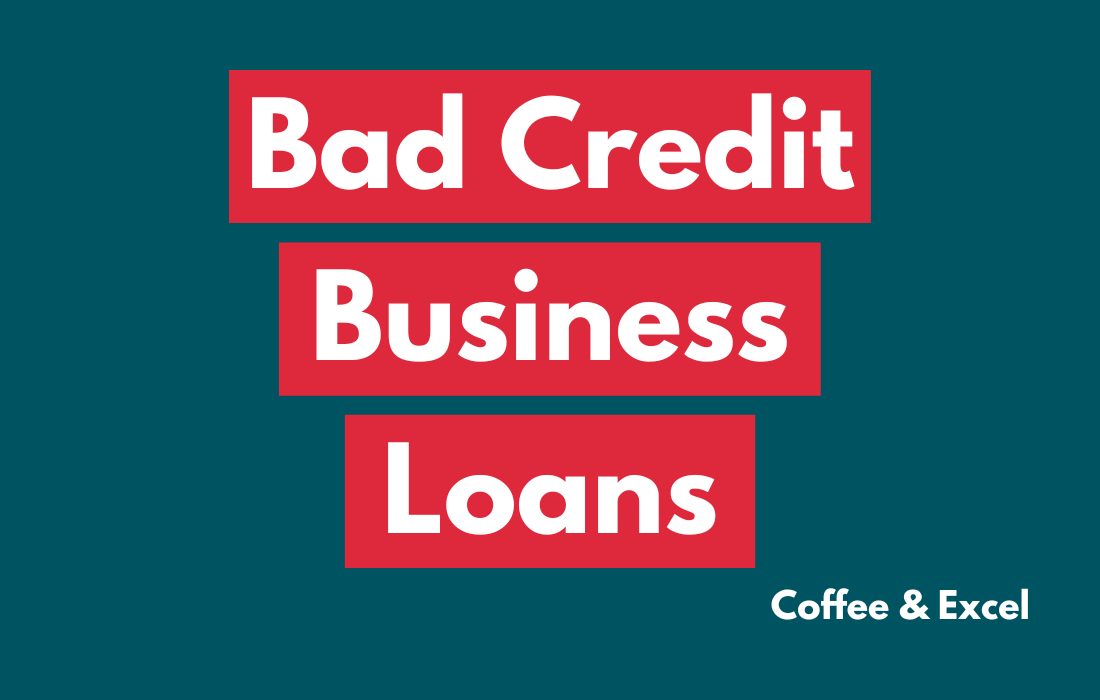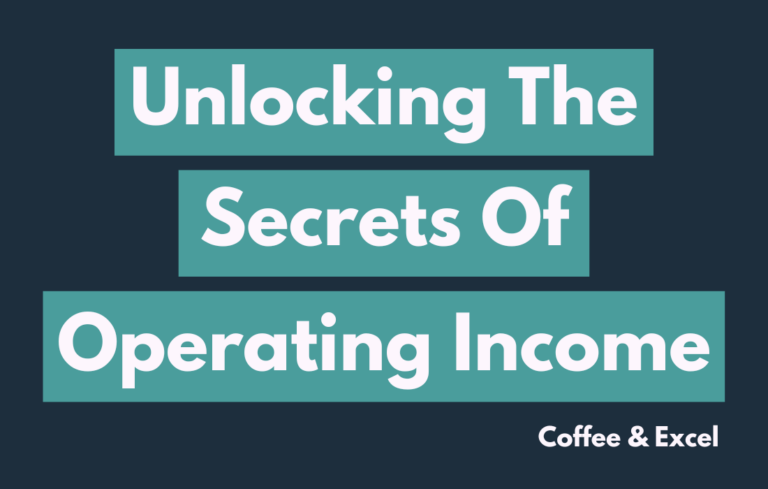Bad Credit Business Loans: Turning Your Setbacks into Success

Understanding Bad Credit Business Loans
For entrepreneurs navigating the complexities of business financing, understanding the implications and options for securing bad credit business loans is crucial. These loans are tailored to assist business owners who may not meet the stringent credit requirements of traditional lending.
Definition of Bad Credit
Bad credit typically refers to a FICO score below 630, which can limit a business owner’s ability to secure traditional loans (NerdWallet). A score below this threshold indicates to lenders that the borrower may have had difficulties managing credit in the past, such as late payments or defaults. Business loans for those with scores under 600 are considered bad credit business loans, designed to cater to entrepreneurs who face challenges in acquiring funding due to their credit history.
Types of Business Loans Available
Despite a less-than-ideal credit score, various loan options remain accessible for small business owners. These include:
- Secured Loans: These require collateral and may offer lower interest rates due to the reduced risk for lenders.
- Unsecured Loans: These do not require collateral but often come with higher interest rates (NerdWallet).
- Short-Term Loans: Suitable for immediate financial needs with quick repayment terms.
- Long-Term Loans: These are used for significant business investments, repaid over several years.
- Lines of Credit: Offering flexible access to funds up to a certain limit.
- Equipment Financing: Tailored loans for purchasing business equipment.
- Merchant Cash Advances: An advance on future credit card sales, repaid through a percentage of daily sales.
- Invoice Financing: Loans based on outstanding invoices, providing immediate cash flow.
- Microloans: Smaller loan amounts, often provided by non-profit lenders or government programs like the Small Business Administration (SBA).
For a comprehensive guide on different types of loans and their specific benefits, refer to our business loans overview. Each loan type offers unique advantages and requirements, so it’s essential to evaluate which aligns best with your business needs and financial situation.
Eligibility for Bad Credit Loans
For individuals who run a small business or are planning to start one, understanding the eligibility criteria for bad credit business loans is essential. Despite the challenges posed by a lower credit score, there are still options available to secure funding.
Credit Score Requirements
Bad credit is typically defined as a FICO score below 630 (NerdWallet). Many traditional lenders view applicants with bad credit as high-risk and are less likely to approve a business loan application. However, credit score requirements can vary greatly among lenders, and some may have more flexible criteria.
| Lender Type | Typical Credit Score Requirements |
|---|---|
| Traditional Banks | 680 and above |
| Credit Unions | 650 and above |
| Alternative Lenders | 630 and below |
To increase the chances of loan approval, applicants should be aware of their credit scores and seek lenders that cater to their specific financial situation. It is also beneficial to review loan agreements carefully to understand the terms and conditions.
Alternative Lender Options
Alternative lenders may offer more lenient credit requirements and could be a viable option for those seeking bad credit business loans. These lenders are inclined to consider additional factors beyond credit scores, such as business revenue and growth potential.
Some of the alternative lending options include:
- Peer-to-peer business lending: Where businesses can obtain loans directly from individual investors.
- Merchant cash advances: An advance based on future credit card sales.
- Small business microloans: Smaller loans that are often provided to newer businesses or those with smaller capital requirements.
- Business line of credit: Provides flexible access to funds up to a certain limit, which can be used when needed.
While these options can provide much-needed capital, it’s important to note that bad credit business loans usually come with higher interest rates and fees. As a result, they should be pursued with caution, ensuring that the terms are manageable and that the loan can be used to truly turn setbacks into success.
Before applying, gathering the necessary documentation and understanding the application process can help streamline the journey toward securing a business loan, even with bad credit.
The Cost of Borrowing with Bad Credit
When businesses with less-than-stellar credit histories seek financing, they often encounter a different set of terms and costs associated with borrowing. Understanding the financial impact of these conditions is vital for any business considering bad credit business loans.
Interest Rates and Fees
Bad credit business loans generally come with higher interest rates and additional fees. This is a direct consequence of the elevated risk that lenders undertake when extending credit to businesses with a lower credit standing. To offset this risk, lenders charge higher rates, which can significantly increase the overall cost of the loan.
According to NerdWallet, businesses with bad credit can expect interest rates that are substantially higher than those offered to businesses with strong credit profiles. These interest rates can vary widely depending on the lender’s policies and the borrower’s creditworthiness.
Moreover, beyond interest rates, businesses should also be prepared for additional fees such as origination fees, processing fees, and potential prepayment penalties. It’s essential to review all the costs involved to fully understand the financial obligations of the loan.
| Loan Type | Estimated Interest Rate Range |
|---|---|
| Bad Credit Business Loan | 12% – 36% |
| Traditional Business Loan | 3% – 10% |
Impact on Loan Terms
The repayment terms of a loan are also influenced by the borrower’s credit score. As NerdWallet notes, bad credit business loans often come with shorter repayment periods compared to those available to businesses with higher credit ratings. This is because lenders aim to minimize their risk exposure and recover their funds more quickly.
Shorter loan terms can lead to higher monthly payments, which can strain a business’s cash flow. However, the total interest paid over the life of the loan may be less due to the shorter duration.
Businesses should carefully consider the terms of the loan, balancing the need for manageable payments with the desire to minimize total interest costs. Tools such as loan calculators can be invaluable in assessing the long-term implications of different loan terms.
Understanding both the interest rates and the impact on loan terms is crucial for businesses navigating the landscape of bad credit financing. By carefully evaluating the costs, businesses can make informed decisions that align with their financial strategies and support their growth trajectories, turning potential setbacks into opportunities for success.
Securing a Loan with Collateral
For business owners seeking bad credit business loans, providing collateral can be a viable way to secure financing. Collateral is an asset that the borrower offers to a lender as security for the loan. It assures the lender that if the loan is not repaid, there is something of value that can be claimed and sold to recover the funds.
Types of Collateral Accepted
A variety of assets can be pledged as collateral for a business loan. Here are some commonly accepted types of collateral:
- Cash
- Securities (stocks and bonds)
- Real estate
- Equipment
- Inventory
- Vehicles
- Invoices
- Accounts receivable
The right type of collateral for a loan will depend on what assets the business holds and the requirements of the lender. For instance, a company specializing in commercial real estate loans may primarily accept real estate as collateral, while those offering small business equipment loans may look for high-value equipment.
Loan-to-Value Ratio Explained
The Loan-to-Value (LTV) ratio is a crucial factor lenders consider when determining how much collateral is needed for a loan. It represents the ratio of the loan amount to the appraised value of the collateral. Typically, the lower the borrower’s credit score, the lower the LTV ratio offered, since the lender takes on more risk by lending to businesses with bad credit.
Here is a simplified example of how LTV is calculated:
| Loan Amount | Appraised Value of Collateral | LTV Ratio |
|---|---|---|
| $50,000 | $62,500 | 80% |
In this scenario, an LTV ratio of 80% means that the lender is willing to loan $50,000 against collateral that is valued at $62,500. A higher LTV ratio indicates a higher level of risk for the lender, as it means they are loaning a greater percentage of the collateral’s value.
It’s important for borrowers to understand that some lenders may require collateral valued higher than the loan amount. This is especially true for lenders offering loans to businesses with bad credit, as the additional collateral value acts as a buffer to offset the higher risk (ValuePenguin).
When considering collateral for a loan, business owners must also weigh the potential impact on their operations. Pledging critical assets, such as essential equipment or property, could hamper the business’s ability to function effectively if those assets were to be seized.
For those seeking to understand more about the nuances between secured vs unsecured loans, it is essential to consider how collateral plays a role in securing a loan and the risks involved. Properly evaluating the assets you can offer as collateral and understanding the LTV ratio can help in making informed decisions when applying for business loans, particularly when dealing with the challenge of bad credit.
Applying for Bad Credit Loans
Applying for a loan with less-than-perfect credit can be a daunting process, but understanding what documents are needed and the steps involved can help streamline the experience. This section covers the essential documentation and the application process for securing bad credit business loans.
Documentation Needed
To apply for bad credit business loans, you will need to gather several important documents that lenders use to assess your financial stability and ability to repay the loan. Here’s a list of common documentation required:
- Personal identification (such as a driver’s license or passport)
- Business licenses and permits
- Proof of business ownership
- Bank statements (to demonstrate cash flow and financial health) (NerdWallet)
- Financial statements, including profit and loss statements and balance sheets
- Tax returns (personal and business)
- A detailed business plan
- Collateral documentation (if securing the loan with assets) (NerdWallet)
Some lenders may also require a personal guarantee from the borrower, particularly when collateral is not available. This personal guarantee is a legal statement that you will repay the loan personally if your business cannot.
The Application Process
The process of applying for bad credit business loans can vary depending on the lender. However, the following steps outline a typical application process:
- Research and compare lenders, focusing on those that specialize in bad credit business loans for more lenient credit requirements (NerdWallet).
- Choose the type of loan that best suits your needs, such as a business line of credit, small business equipment loans, or merchant cash advances.
- Gather all necessary documentation. This can typically be found on the lender’s website or by contacting their customer service.
- Complete the application form, which may be available online for faster processing (NerdWallet).
- Submit your application along with all required documentation.
- Await approval. Online lenders may provide a decision more quickly than traditional banks.
- Review the loan offer carefully, paying close attention to the interest rates, fees, and repayment terms.
- If the terms are agreeable, sign the loan agreements and await funding.
Remember to use loan calculators to understand the potential cost of borrowing before accepting any loan offers. Also, consider seeking advice from financial experts or counselors to ensure you’re making an informed decision that aligns with your business’s financial goals.
The right preparation and understanding of the bad credit loan application process can increase your chances of approval and help you secure the necessary funding to grow your business despite credit challenges.
Choosing the Right Loan Option
Finding the right loan option is a critical step for business owners looking to secure financing, especially for those with less than perfect credit. This section will compare traditional and alternative lenders and provide guidance on evaluating loan offers.
Traditional vs. Alternative Lenders
When seeking bad credit business loans, business owners must understand the differences between traditional and alternative lending sources.
Traditional Lenders:
- Banks and credit unions fall into this category.
- They typically offer lower interest rates and longer repayment terms.
- However, they are less likely to approve loans for applicants with bad credit (NerdWallet).
Alternative Lenders:
- These include online lenders, peer-to-peer business lending platforms, and other non-bank financial institutions.
- They are more accommodating to those with less-than-ideal credit.
- Approval and funding processes are generally faster than traditional banks (NerdWallet).
| Lender Type | Approval Likelihood for Bad Credit | Approval Speed | Interest Rates |
|---|---|---|---|
| Traditional | Low | Slow | Lower |
| Alternative | High | Fast | Higher |
Evaluating Loan Offers
Once potential loan sources have been identified, it’s essential to evaluate each offer carefully to ensure that it aligns with the business’s needs and financial health:
- Interest Rates: Compare the loan interest rates offered by different lenders. Alternative lenders may offer higher rates due to the increased risk associated with bad credit.
- Repayment Terms: Understand the repayment schedule. Longer terms might lower monthly payments but could result in higher total interest paid over the life of the loan.
- Fees: Be aware of any additional fees associated with the loan, such as origination fees, prepayment penalties, or servicing fees.
- Loan Amount: Ensure the loan amount covers your business needs without being excessive, to avoid overindebtedness.
- Flexibility: Consider the lender’s flexibility regarding repayment and whether they offer options like loan refinancing or business loan refinancing if your financial situation improves.
- Purpose of Loan: Ensure the loan’s allowed uses align with your business’s needs, whether it’s for franchise financing, small business equipment loans, or commercial real estate loans.
Lender Reputation: Research the lender’s reputation and read small business loan stories to gauge borrower experiences.
Using loan calculators can also be helpful in assessing the overall cost of a loan, considering the interest rates and fees. Through careful evaluation, business owners can make informed decisions and select the right loan option to help turn their setbacks into success.





